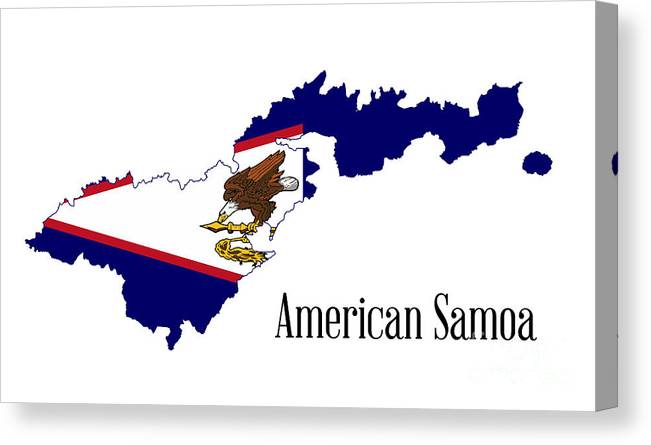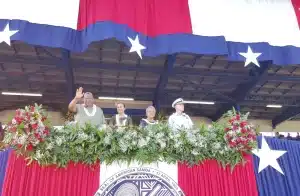Metro
American Samoa: Population, Official Language And More.

In 1900, after a short resistance by some native chiefs led by Chief Tui Manu’a Elisala on Ta’u island, American Samoa was formally annexed by the US as an unincorporated territory. The native chiefs ceded their lands and authority to the US in trade for defense and recognition of their rights. The U.S. Navy established a naval station on Pago Pago Bay and appointed a naval officer as governor of American Samoa.
The Population: According to the 2020 census, the population of American Samoa was 49,710 people, of whom 57.6% were born in American Samoa, 28.6% in independent Samoa, 6.1% in other parts of the United States, 4.5% in Asia, 2.9% in other parts of Oceania, and 0.2% elsewhere. The majority of the population are indigenous ethnic Samoans (88.9%), followed by Asians (4.2%), mixed race (3.7%), Pacific Islanders (2.7%), and others (0.5%). The median age of the population was 23.8 years, and the sex ratio was 104.9 males per 100 females.

The Landmark: One of the most notable landmarks in American Samoa is the National Park of American Samoa, which covers parts of Tutuila, Ofu, Olosega, and Ta’u islands. The park preserves and protects the natural and cultural heritage of the Samoan people, including rainforests, coral reefs, volcanic mountains, beaches, and archaeological sites2. Another landmark is the Pago Pago Harbor, which is one of the largest and deepest natural harbors in the South Pacific. The harbor has been a strategic naval base for the United States since 1900 and is now a commercial port of call for cruise ships and fishing vessels.
The Official Language: The official languages of American Samoa are English and Samoan. English is used as the language of administration, education, commerce, and communication. Samoan is used as the language of culture, tradition, and religion. Samoan is a Polynesian language that belongs to the Austronesian language family. It has two main dialects: Eastern Samoan (spoken in American Samoa) and Western Samoan (spoken in independent Samoa).
The Culture: The culture of American Samoa is a blend of traditional Samoan values and customs with modern American influences. The Samoan culture is based on the concepts of fa’a Samoa (the Samoan way), alofa (love), tatau (tattoo), matai (chief), fono (council), aiga (family), fa’amatai (chiefly system), fa’alupega (formal greetings), fa’asamoa (Samoan culture), and fa’aleagaga (religion). The Samoans are known for their hospitality, generosity, respect, humor, artistry, music, dance, sportsmanship, and spirituality. The most widely practiced religion in American Samoa is Christianity (98.3%), followed by other faiths (1.7%).
The Economic Stability: The economy of American Samoa is dependent on external sources of income, such as federal grants, military spending, remittances, tourism, and tuna fishing and processing. The gross domestic product (GDP) of American Samoa was $636 million in 2019, with a per capita income of $11,200. The main sectors of the economy are services (88%), industry (11%), and agriculture (1%). The main exports are canned tuna, fish products, coconut oil, handicrafts, and clothing. The main imports are foodstuffs, petroleum products, machinery, vehicles, and consumer goods. The unemployment rate was 29.8% in 2010. The poverty rate was 65% in 2012.
The GDP: As mentioned before, the gross domestic product (GDP) of American Samoa was $636 million in 2019, with a per capita income of $11,200. The GDP growth rate was -2.6% in 2019, reflecting the decline in the tuna industry and the impact of natural disasters. The GDP composition by sector was services (88%), industry (11%), and agriculture (1%).
The Currency: The currency of American Samoa is the United States dollar (USD), which is also the official currency of the United States and its other territories. The USD is divided into 100 cents, and the symbol is $. The exchange rate of the USD to other currencies varies depending on the market conditions. For example, as of July 27, 2023, 1 USD was equal to 2.70 Samoan tala (WST), which is the currency of independent Samoa.
The Food: The food of American Samoa is influenced by both Samoan and American cuisines. Some of the traditional Samoan dishes include palusami (taro leaves baked with coconut cream), oka (raw fish marinated in lime juice and coconut milk), faiai fe’e (octopus cooked in coconut cream), suaia (chicken soup with coconut milk), fa’ausi (breadfruit cooked with coconut cream), and panikeke (fried doughnuts). Some of the American dishes include spam (canned meat), corned beef (canned beef), pizza, hamburgers, and ice cream. Fruits such as bananas, papayas, pineapples, mangoes, and coconuts are also widely consumed.
Major Cities: The capital and largest city of American Samoa is Pago Pago, which is located on the island of Tutuila. Pago Pago has a population of about 3,656 people and is the main commercial and administrative center of the territory. It is also home to the Pago Pago Harbor, the National Park of American Samoa headquarters, and the Fagatogo market. Other major cities in American Samoa include Tafuna, which is the most populous city with about 7,945 people and is located near the Pago Pago International Airport; Leone, which is the second oldest village in Tutuila and has a population of about 4,050 people; and Fagatogo, which is the seat of government and has a population of about 3,000 people.
Major Airport, Sea Port and Schools: The major airport in American Samoa is the Pago Pago International Airport (PPG), which is located on the island of Tutuila. The airport serves domestic flights to other islands in American Samoa, as well as international flights to Hawaii, Samoa, Tonga, Fiji, Australia, and New Zealand. The airport has one runway and one terminal building. The major sea port in American Samoa is the Pago Pago Harbor, which is one of the largest and deepest natural harbors in the South Pacific. The harbor serves as a strategic naval base for the United States, as well as a commercial port for cruise ships and fishing vessels. The harbor has several wharves and docks for cargo handling and storage. Some of the major schools in American Samoa include American Samoa Community College (ASCC), which is a public college that offers associate degrees and certificate programs in various fields; Samoana High School, which is a public high school that serves grades 9 to 12; Fa’asao Marist High School, which is a private Catholic high school that serves grades 9 to 12; and Manumalo Baptist School, which is a private Christian school that serves grades K to 12.





